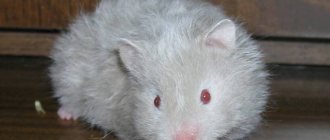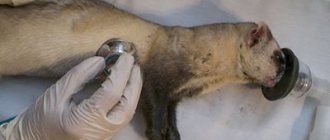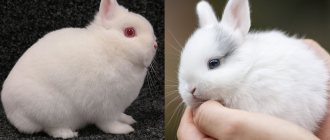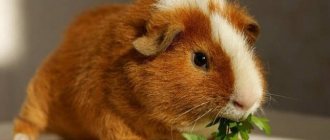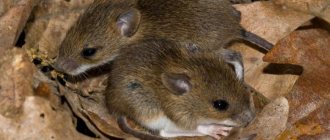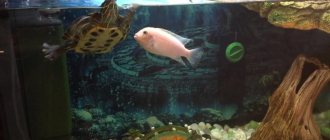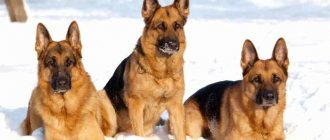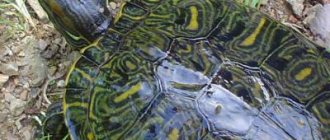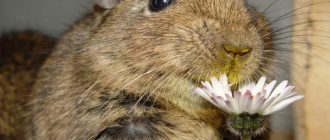One of the most popular dog breeds is spaniels, which are distinguished by their friendly and cheerful character, active behavior and curiosity. When getting a pet, owners rarely think about the animal's lifespan. It is important to understand that pets have a much shorter lifespan than humans. If there are children in the family, it is necessary to explain to the kids why their pet cannot be with them all their lives. This article will talk about how long spaniels of different types live, what are the features of this breed, and how to extend the life of a pet.
Representative of the Cocker Spaniel breed
Origin story
England is considered to be the homeland of representatives of this breed. The breeding of these animals was aimed at hunting birds. Initially, the dogs were larger, but as soon as they were crossed with Japanese spaniels, delivered as a gift to the Queen of England, their size decreased noticeably. As a result, individuals appeared that differed from other spaniels in size and color.
The hallmark of all spaniels is considered to be chestnut-red spots on a whitish background.
The origins of the breed were squat and long-haired bird dogs. From here they end up on the Iberian Peninsula (Iberia). After this, representatives spread throughout Western Europe and England. The British did everything to improve the hunting qualities of their pets. It was possible to ensure that cockers acquired the ability to hunt in impenetrable thickets, tall grass and thorns. They also learned to signal with their voices that game had been found. The world standard of the English Cocker Spaniel breed received official status in the 80s of the 20th century.
Causes of premature death of a dog
Accidents, poisoning, and existing pathologies of internal organs lead to the sudden death of animals. Negative consequences are difficult to predict, however, it is preferable to know what potential dangers threaten your pet.
Common causes of premature canine death:
- poisoning;
- heart disease;
- pneumothorax;
- tracheal collapse;
- congenital abnormalities;
- expansion, volvulus of the stomach;
- ulcer;
- splenic tumor rupture;
- foreign body entering the throat;
- heatstroke;
- injury.
Dogs often suffer from poisons intended for rodents, poisons distributed to exterminate stray dogs. During a walk, be sure to keep an eye on your pet; if the dog does not respond to the command “ugh,” put on a closed muzzle so that the dog does not try questionable “food.”
Heart diseases can manifest asymptomatically, but if a young dog gets tired quickly, is weak, or is breathing heavily, you need to visit a veterinarian for a diagnostic examination.
Air accumulation in the peripulmonary space (pneumothorax) occurs due to injuries to the sternum leading to damage to the emphysematous bladder or existing tumor on the lung.
Tracheal collapse is more common in small breeds, is expressed by a sharp cough after active mobility or the manifestation of strong emotions, and sometimes occurs as a complication of past infections.
A congenital pathology that leads to tragic consequences is the displacement of the cervical vertebrae as a result of insufficient development or defect of the ligaments. An accidental jolt to the problem area can cause pressure on the spinal cord and be fatal.
Gastric dilatation and volvulus are more common in older dogs; both pathologies interfere with the normal blood supply to other organs and are considered deadly. Prevention of stomach problems is considered to be proper nutrition, adherence to a feeding regime and moderate exercise.
The premature death of the animal is caused by complications of peptic ulcer disease, expressed in the formation of a through hole in the wall of the stomach or bleeding. A precaution is the proper nutrition of your pet.
New growths on the spleen (benign and malignant) are susceptible to rupture, which can lead to fatal loss of blood. Tumor rupture is possible even with minor damage caused by difficult bowel movements or increased physical activity.
Swallowing a foreign object risks suffocation or injury to internal organs as the swallowed object moves inside.
Heatstroke is caused by severe overheating of the body and often occurs in dogs locked in a car in hot weather.
A dog can be injured on the street (being hit by a car, fighting with other dogs, etc.), at home (falling from a height, electric shock, etc.), the danger of injury depends on the degree of its severity and the provision of first aid.
https://dog-care.ru/zdorove/voprosy/skolko-zhivut-amerikanskie-koker-spanieli.html
Description of the breed
The characteristics of the breed include the following standards:
- round head, proportional;
- the muzzle is wide, has a blunt edge;
- eyes are not protruding, dark;
- long drooping ears covered with thick hair - it is by this feature that everyone recognizes spaniels;
- the nose is large, black or brownish in color;
- has a squat, muscular, proportionally built body with smooth curves;
- powerful bite;
- The coat is double, soft and silky on top, with a thick undercoat underneath. In short, it's on the head.
Colors may vary. The standard allows for nuances in the color resolution of the breed. For example, for the English Kennel Club, white spots are a defect; only their presence on the chest is allowed. Solid color is recognized. But in general, there are two main colors of the breed - solid and spotted. Solid colors include red, black, chocolate and fawn. Pure white color is not acceptable. Most individuals are red. Cockers used to have their tails docked to prevent them from getting caught in bushes. Today, spaniels are kept at home as decorative pets; this procedure is not necessary. The height of an adult dog is approximately 38-41 cm, males are taller. The weight of an adult dog is 12.5-14.5 kg.
How long do Russian spaniels live or how to extend the life of a little hunter?
The Russian spaniel is considered the pride of Russian dog breeders. He has an expressive appearance, a sociable and friendly character, and excellent instincts.
The average life expectancy of the breed is longer than that of other hunting dogs. Despite this, owners always want their dog to live even longer.
We will tell you in detail how to properly care for your pet in order to prolong its life, and we will also look at how to avoid the accidental death of a dog.
Character
Good-natured, playful and naturally lively, Cocker Spaniels are overly sociable and loyal. The most important thing for them is to be closer to their owner. Qualities such as responsiveness and friendliness make pets ideal companions for a child of any age. An English Cocker Spaniel and children will definitely become friends. Lonely elderly people will be pleased with their new friend. But no matter how many representatives the family consists of, the dog is truly attached to only one person.
Cocker spaniels can be stubborn. One can also observe a clear manifestation of a sense of ownership, especially when it comes to toys and other animal objects. An invariable favorite activity that spaniels do especially well is hunting. Their tirelessness and hard work in this field are off the charts. They have long been used by hunters to find and deliver shot animals.
Spaniels behave freely and easily with all household members, but strangers make them wary. Pets begin to bark loudly and decisively at strangers.
Spaniels are capable of jealousy, but they are not able to show feelings of resentment at all. If the dog is punished, then not even half an hour will pass before the furry friend will not remember the incident.
Spaniels can boast an enviable appetite. They have such a quality as indiscriminate eating, which is fraught with certain consequences. Therefore, owners need to carefully monitor their pet’s diet. This will not be easy to do, since dogs are prone to begging and will use all their charm.
Cocker spaniels are dominated by females rather than males. They are always ready to please their owner, so they are easy to train.
Interesting Facts
Cocker spaniels are significantly different from other representatives of hunting dogs. To make sure of this, you should find out interesting facts about this breed.
Dogs have a unique talent for begging for food from the table. They do it so cutely that sometimes their owners can’t stand it and treat them with treats. But doing this is strictly prohibited. Sometimes even the smallest piece of human food can end disastrously for the health of the animal.
Many are inclined to believe that the Russian spaniel is a hunting dog, whose main task is to pick up a bird or chase some animal, but this is not entirely true. When hunting, spaniels pick up a bird and point it at the shot, then run and pick it up and carry it to its owner. There is no need to worry if a shot bird falls into the water. Spaniels are excellent swimmers, so they can easily get game from even a small lake or river.
Spaniel on the hunt
If the spaniel sees a duck or other possible game, he makes a warning stance, rising on his hind legs, after which he sharply jumps forward.
Cocker spaniels are so hardy that they can run after ducks and various animals through the forest and swamp all day long.
On a note! During the hunt, their strength increases several times.
Another very interesting fact is that spaniels are often used by the police or customs service. This is because dogs have a well-developed sense of smell, thanks to which they can find narcotic or explosive substances, even if they are in hard packaging.
Another important fact is their height and weight. They can get into places where large dogs, such as shepherds, cannot get through. People are less afraid of them than shepherds and therefore are able to let dogs get as close to them as possible, and this is sometimes of great importance.
Wherever the pet lives, in an apartment or in a country house, it must be carefully looked after, monitored for health, and then it will live much longer than expected.
Care and maintenance
The English Cocker is an ideal pet for keeping in an apartment. This is facilitated by its small size. But, like any dog, this animal requires good care. There is no need for frequent bathing. This procedure is carried out as needed - as soon as the dog is very dirty. When bathing, you should use a special shampoo. However, after every walk you need to wash your dog’s paws. The brilliant appearance of the pet is maintained by constant combing and tidying up the tuft on the head, which is plucked. This is especially difficult to do during the first molt, which occurs at 6 months. Your pet's long ears also need to be systematically cared for.
The English Cocker Spaniel requires a special feeding container on a stand. In this case, the ears will not dangle in the plate or rub on the floor.
Periodically, your pet needs:
- trimming fur on paws;
- claw trimming;
- plucking long hairs on the face.
Vaccination must be done in a timely manner. You can castrate a male dog if he was not purchased for breeding.
Feeding
Cockers are not gourmets; they are absolutely not picky about food. The diet can consist of both ready-made store-bought food and regular home-cooked food.
You should monitor your spaniel's diet especially carefully, otherwise there is a high risk of obesity.
It is recommended to develop a balanced menu filled with essential vitamins for your pet. It is necessary to ensure that the dog has constant access to drink. Milk can only be given to puppies, but it is not advisable for adults to include it in their diet. The puppy's serving should be 4 tbsp. l. feed at a time. Babies up to 2 months can be fed 6 times a day, but in small portions. From 4 months of age, the number of meals should be reduced to 4. From 1 year, it is reduced to 2 times, while the volume of a single serving increases.
The main products in your pet's diet should be meat, fish, vegetables, cottage cheese and porridge. Lean meat is recommended. Vegetables are served stewed. Sometimes the menu can be diversified with eggs. Once every six months, the dog should be supplemented with a vitamin complex to its food, which will help maintain healthy teeth and coat.
Grooming, haircut
Grooming requires special attention. This procedure should be taught from early childhood. To comb, you need to use a metal comb and a massage brush. It is better to schedule the procedure for the period when the dog is fed, walked and wants to sleep. A forelock and sideburns usually grow quickly on your pet's face. According to standards, they need to be removed (trimmed). Also, from an early age, puppies should learn to be groomed. It is better to entrust grooming to a professional first. Over time, you can learn to perform this procedure yourself.
Care must be taken to ensure that hair does not grow on the paws, as this can negatively affect the gait.
Using scissors, the hair in the ears is trimmed. This helps keep them clean.
Training and education
You need to start raising a pet from the moment it crosses the threshold of the house, while the dog’s psyche is not yet formed and its behavior can be easily modeled. Cocker spaniels are highly trainable, especially as puppies. This breed is quick to train due to certain characteristics: it perfectly understands the owner’s commands and always strives to please him.
Nutritional Features
You can feed Russian spaniels with natural products or industrial food, it is only important to follow a few important rules:
- do not mix both types of nutrition;
- ensure that your diet is balanced and contains all the necessary vitamins and minerals;
- strictly control the volume of portions consumed by your pet - 40 g/kg weight of dry food and 30/60 g/kg of natural products;
- Give your dog fasting days twice a month, reducing the daily amount of food by 60%.
IMPORTANT!
The portion can be increased only for animals after illness, lactating bitches and in winter for dogs living in an enclosure.
With a natural diet, the owner has the opportunity to independently choose fresh and high-quality food for the dog, but such a diet requires a lot of time for daily food preparation. In addition, creating a balanced menu is quite difficult.
The pet must be given:
- lean meat;
- offal;
- sea fish;
- porridge;
- vegetables and fruits;
- dairy products;
- greens as natural dietary supplements;
- eggs.
Representatives of the breed should not be fed:
- animal fats;
- bones;
- smoked meats and sausages;
- pickles, marinades;
- pork;
- citrus fruits;
- potatoes;
- sweets, baked goods;
- spicy, fried foods.
If we are talking about industrial feed, then their advantage is a much more convenient method of storage and use, as well as a composition enriched with vitamins and minerals.
In addition, a wide range of food allows you to choose a diet for your pet in accordance with its age, health and physiological state.
You should choose only high-quality premium, super-premium or holistic food.
Products from the brands Go, Hills, Royal Canin, Probalance, Pro Plan, Savarra, Acana have proven themselves well..
Menu for the week
| Day of the week | Menu |
| Monday | 500 g meat, 100 g greens, 200 g oatmeal, 100 g yogurt, 100 g vegetables |
| Tuesday | 600 g boiled fish, 100 ml natural yogurt, 100 g vegetables, 50 g cottage cheese, 150 g buckwheat porridge |
| Wednesday | 50 ml kefir, 50 g herbs, 550 g offal, 100 g cottage cheese and 100 g vegetables, 150 g oatmeal |
| Thursday | 150 g cottage cheese, 50 g greens, 1 egg, 500 g beef, 150 g vegetables, 150 g rice porridge |
| Friday | 50 ml kefir, 50 g greens, 550 g offal, 100 g cottage cheese, 100 g vegetables, 150 g rice porridge |
| Saturday | 600 g of boiled sea fish, 100 ml of natural yogurt, 100 g of vegetables, 50 g of cottage cheese and 150 g of buckwheat porridge |
| Sunday | 500 g meat, 100 g greens, 200 g oatmeal, 100 g cottage cheese, 100 g vegetables |
Diseases and life expectancy
English Cocker Spaniels are known for their good health. Among the diseases that occur among them, several are worth noting:
- glaucoma;
- urolithiasis disease;
- cataract;
- food allergies;
- otitis;
- epilepsy;
- hip dysplasia
Particular problems can come from pets who are prone to hysterics, expressed by unmotivated fear and anger. Proper nutrition, proper care and regular walks are the best disease prevention. Knowing how to keep your pet healthy can extend its life.
It is difficult to say for sure how many years spaniels live. The lifespan of dogs of this breed depends on hereditary characteristics and compliance with the regime and rules of care. On average, this figure does not exceed 11 years, with rare exceptions. A third of all deaths occur from cancer. A fifth of spaniels die from external causes and the smallest part - from pathologies of the cardiovascular system.
Video
* We invite you to watch a video about the Russian Hunting Spaniel . In fact, in front of you is a playlist in which you can select and watch any of 20 videos about a given dog breed by simply clicking on the button in the upper right corner of the window. In addition, the material contains quite a lot of photos. By looking at them you can find out what a Russian Hunting Spaniel looks like.
In this article:
|
How to choose a puppy
Once you have decided on an English Cocker Spaniel, you can go get one. To do this, you need to contact a nursery, where you are guaranteed to get a purebred representative of the breed, the most popular are:
- ALFA GOLD in Moscow;
- TOFFEE*S in Moscow;
- PRIDE OF THE URAL in Yekaterinburg.
The price for a purebred puppy with a pedigree is about 20,000-25,000 rubles.
To what age do they grow?
Not everyone knows that English Spaniel puppies grow until they are about 8 months old. Babies gain weight over the months:
| Age (months) | Weight, kg) |
| 1 | 1,5 |
| 2 | 3-3,5 |
| 3 | 5-6 |
| 4 | 6,5-8 |
| 5 | 8-10 |
| 6 | 9-11 |
| 7 | 10-12 |
By the age of 1.5 years the individual matures. Mating is possible during the period of 1-1.5 years, during which time the female matures and begins to come into heat. Subsequently, estrus will recur every 6-8 months. For mating to be successful, you need to carefully calculate the mating time. This should be 8-10 days from the start of estrus.
How long do purebred animals live?
According to veterinary experts, there is a clear relationship between the breed and the years measured to the animal. It has been scientifically proven that the smaller the dog, the longer its life.
The vitality of representatives of different breeds varies. This is due to human breeding activities. When developing standards, dogs develop and reinforce features that are often unnatural.
Breeding a breed is fraught with complications, which are expressed in hereditary diseases:
- Chihuahua. These cute little creatures are genetically prone to medial dislocations of the kneecaps, elbow joints, and various dysplasias.
- Dachshund. Natural hunters, with a funny long body on short legs, pay with health for such a body structure. Hereditary pathology in dachshunds is intervertebral disc disease.
- Shar-Pei. Not only in this breed of dog, but in all pets with skin folds, the disease entropion, which is essentially an entropion of the eyelid, is common.
- Rottweilers. Strong, brave, fearless, smart. But they are also susceptible to hereditary diseases - aortic stenosis, Rottweiler leukoencephalopathy, follicular lipidosis.
- Pikines. This ancient breed is distinguished by a special eye structure, for which it suffers from a tendency to eversion of the eyelids, cataracts, and corneal ulcers.
Pros and cons of the breed
Like any pet, cocker spaniels are endowed with advantages and disadvantages:
| Pros of the breed | Cons of the breed |
| Intelligence and activity | Problems in training |
| Devotion | They bark loudly and a lot |
| Excellent communication with children | Frequently experience ear infections |
Knowing the differences between the American and English cocker spaniel, you will be able to distinguish the desired breed. For example, English representatives are larger in size compared to their American counterparts. The American has a more developed coat. In addition, the American Spaniel has a smaller and rounder head. The British cocker is more active and lively than its counterpart. The latter has a calm disposition.
Popular nicknames
The choice of a nickname for a pet should be approached responsibly. It is important that the dog’s name is easy to pronounce, sonorous and short - animals quickly remember such words and begin to associate themselves with them.
The male can be called:
- Alan;
- Archie;
- Butch;
- Barney;
- Thunder;
- Wild;
- Kai;
- Kevin;
- Muffy;
- Matt;
- Noah;
- Oscar;
- Pirate;
- Robie;
- Roy;
- Raf;
- Roni;
- Ren;
- Falcon;
- Sebastian;
- Sparky;
- Hoshi;
- Charlie;
- Chance;
- Eric.
Names suitable for girls:
- Amba;
- Arina;
- Amur;
- Boni;
- Snowstorm;
- Dory;
- Dolly;
- Dekla;
- Christie;
- Lika;
- Laura;
- Molly;
- Mary;
- Nika;
- Naida;
- Puma;
- Sparta;
- Arrow;
- Cynthia;
- Secret;
- Ula;
- Frida;
- Chara;
- Yula;
- Clear.
In order for the puppy to quickly remember his name, you need to pronounce it as often as possible and call your pet by name, treating him with a treat - this contributes to better perception and consolidation of positive associations.
Procedure at home step by step
The scheme for creating a hygienic hairstyle is simple, and it can be applied with equal success to both English and American cockers.
Before you start trimming the dog’s fur, you need to wash it and dry it with a hairdryer, comb it, and if there are tangles, sort them out.
The back, croup and withers are combed with a furminator, a trimming knife, or plucked using fingertips. The head can be trimmed or shaved.
The muzzle, the inside and the outer upper third of the ears are shaved with a machine. The neck is shaved down to the collarbones, leaving a triangle on the chest. English spaniels have the hair removed from the front of their paws, leaving the feathering at the back.
The hair under the tail is removed using a machine.
Using straight scissors, shape the ears, draw a line of feathers on the paws and tail, and trim the desired length of the skirt. For the English, the fur on the hind paws is smoothed out.
Mating
Dogs can be untied at the age of 20-25 months, although puberty comes much earlier (8-10 months). It is during this period that the female will go into her third heat, and a loose loop and light discharge will be a signal that the girl is ready.
To officially transport the breeding, owners need to fill out certificates and forms at the nursery. The male is selected in advance, the owners agree on the date and price, which is usually equal to one puppy or a percentage of its cost.
Pets must be checked for pathologies and diseases and undergo deworming 2 weeks before mating.
Spaniels are not large, they do not need much space. The pets are introduced, walked together, and brought to the dog’s territory. Here the boy will feel relaxed and free. If the female is calm and everything suits her, then the male will be able to make a cage. Otherwise, you need to give the dogs more time or try another day.
Sexual intercourse lasts from 10 to 15 minutes , during which time the animals are helped not to lose their balance: the girl is held under the stomach and by the head, the boy is guided into a noose. You can invite a specially trained person. In the absence of a lock, the female can be fertilized. The fixative mating is carried out after 2 days .
Read a detailed article on the topic: “Everything you need to know about breeding dogs: appropriate age, what to do if it doesn’t work out, rules and tips.”
Distinctive features
This breed is medium-sized, well-built, with a strong body and well-developed muscles. A feature can be considered long hair and variability of colors. At the withers, the animals reach 36-44 cm, and weigh from 15 to 20 kg.
Spaniels are stretched in structure. Their body length is slightly greater than their height. Their limbs are quite long, which makes them adaptable to running through swamps or snowdrifts. The latest standard was published in 2012.
- The head is dry and long. The skull is oval, with a pronounced smooth stop and brow ridges.
- The muzzle is moderately long, narrow (tapering towards the nose), filled in under the eyes. The jaws are strong but soft, with a full set of teeth and scissor bite The lips are thin and pigmented.
- The nose is wide with open nostrils.
- The eyes are medium-sized, oval, not widely set. The color of the iris depends on the coat color: from light brown to dark brown.
- The ears are set at eye level, long, thin, adjacent to the cheekbones;
- The body is streamlined and strong. The back is long and wide. The loin is slightly convex. The croup is sloping. The withers are pronounced. The chest is deep and well descended. The neck is of moderate length, dry, muscular. The belly is tucked in.
- The tail is a continuation of the croup, moderately long, carried at the level of the back or slightly above it. It is docked by half, unless it is prohibited in the country.
- The limbs are dry, straight, parallel, the hind legs are set wider than the front ones. The paws are oval with gathered toes, characterized by the presence of hair between them. Movement : light gallop.
- The coat is straight or wavy, moderately long, close-lying and shiny. Lengthening is noticeable on the ears, limbs, abdomen, chest and neck.
- Colors: solid, bicolor or tricolor in various variations.
Cryonics or cryopreservation
Cryonics, or cryopreservation (from the ancient Greek κρύος - “cold; frost”) is a technology that allows you to preserve the bodies of people and animals in a state of deep cold in order to wait for the future, when defrosting technologies become available to revive them, and if a frozen person was now ill with an incurable disease - cure. Now during cryopreservation it is possible to freeze not the whole body, but only the head or brain.
At cryogenic temperatures, there are no significant changes in a biological object (for hundreds and thousands of years) - this fact serves as the basis for supporters of cryonics as a method for achieving life extension.
